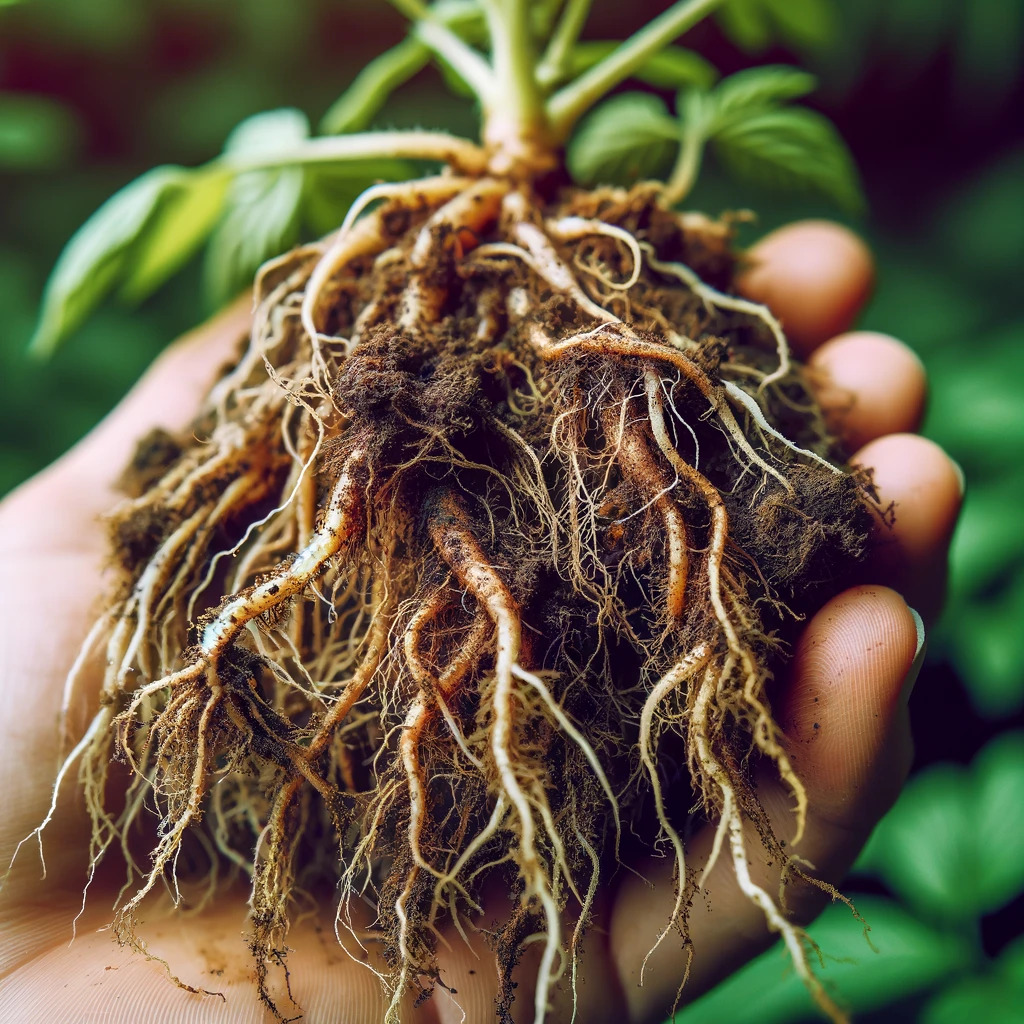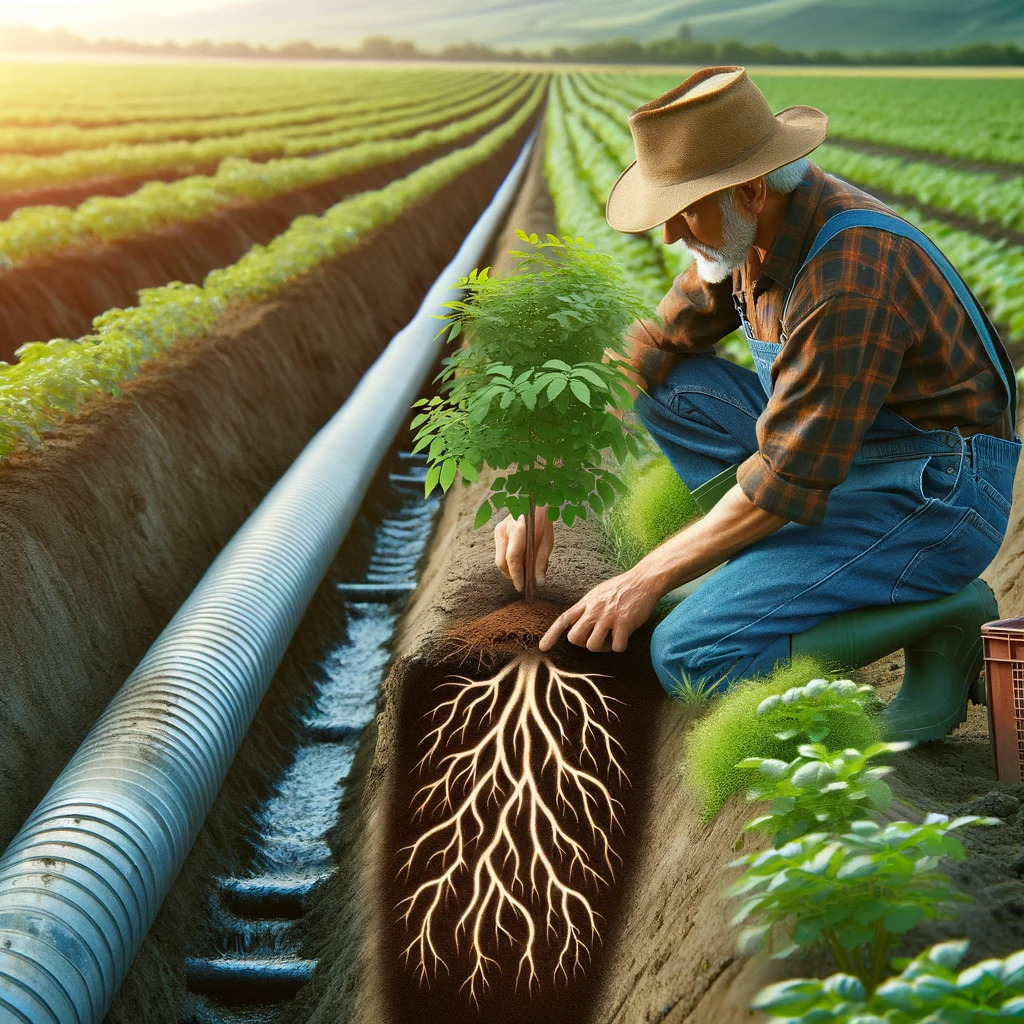Understanding Root Rot in Agriculture
Root rot is a devastating disease that affects a wide range of plants, both in agriculture and gardening. Caused by various soil pathogens, this disease attacks the plant roots, compromising their ability to absorb nutrients and water.

What Is Root Rot and How Does It Manifest?
Root rot is the result of fungal or bacterial infections that develop in poorly drained soil and excessive watering conditions. Symptoms include wilting, yellowing of leaves, stunted growth, and, in advanced stages, plant collapse.

Crops and Plants Commonly Affected
This disease can affect a variety of crops, including vegetables, fruit trees, and ornamental plants. It is especially common in heavy and poorly drained soils.
Impact of Root Rot in Agriculture
Root rot can cause significant losses in crops, reducing both yield and the quality of fruits or vegetables. In severe cases, it can lead to plant death.

Prevention and Control Strategies
Prevention is crucial in managing root rot. Some recommended practices include:
- Improving soil drainage: Ensure that the soil has adequate drainage to prevent waterlogging.
- Proper watering: Avoid overwatering and allow the soil to dry between waterings.
- Use of fungicides: Applying specific fungicides can help control the disease-causing pathogens.

Integrated Management of Root Rot
In addition to preventive measures, integrated management including crop rotation and the use of resistant varieties can be effective in reducing the risk of this disease.
Conclusion: Protecting Your Crop’s Health
Managing root rot requires a proactive and careful approach. With the right practices, it is possible to minimize the impact of this disease and maintain healthy and productive crops.
Long-tail keywords: Effective Root Rot Strategies, Identification and Management of Root Rot, Irrigation Techniques to Prevent Root Rot, Soil Improvement to Combat Root Rot, Root Rot-Resistant Crops.
 AgronoBlog – Agriculture Blog
AgronoBlog – Agriculture Blog 